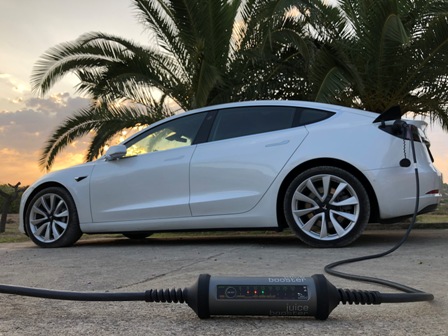
Seven tips to keep your electric car charging
London, 15 August, 2023, (Oilandgaspress) Juice Technology, one of the world’s leading companies in the development of charging solutions for electric vehicles, offers some tips on how to optimise car battery charging during these hot months. As the cold of winter can affect a vehicle’s range, so too can the heat.
The lithium-ion batteries used in most electric cars don’t cope with all extreme temperatures. They need to be cooled to prevent them from overheating, just as the car’s interior needs to be at the right temperature for them to perform at their best. This is where the car’s cooling system comes into its own. The risk of the battery overheating increases on long journeys when the outside temperature is very high, which can lead to the battery overheating. This overheating means that the higher the temperature, the greater the impact on range, which is also affected by using air conditioning during the hot months.
If the temperature exceeds 45°C, the charging rate will be reduced: as the battery approaches the point of overheating, the charging rate slows down.
How can you optimise your e-charging in summer?
Charge the battery at times when temperatures are milder, such as early in the morning or in the evening. In this way, the performance of the charging process will not be affected by high ambient temperatures.
Switch on the air conditioning before driving. If you switch on the air conditioning during the charging process, it draws power from the mains and not from the battery. This prevents overheating.
Try to avoid sudden acceleration and braking when driving. Smooth driving uses less energy, the battery heats up less and the car’s range increases during the journey.
Try to maintain a constant speed. The faster you drive, the more likely the battery is to heat up.
Park the car in the shade if possible. The battery cooling system does not work when the car is stationary, so it is important to avoid parking in the sun to prevent overheating and reduced range.
Use a sun-protected charger. Where possible, it is best to use an indoor or sun-protected charger. Both the vehicle and the charger are less likely to overheat and the charging process will be more efficient.
Plan your route, including any necessary stops to recharge. Before a car stops for lack of battery charge, the system will have given several warnings and limited the maximum speed. However, to avoid surprises, it is advisable to plan your route in advance, especially for long journeys, including possible stops for recharging.
Information Source: Read More
Energy Monitors , Electric Power , Natural Gas , Oil , Climate , Renewable , Wind , Transition , LPG , Solar , Electric , Biomass , Sustainability , Oil Price , Electric Vehicles,



